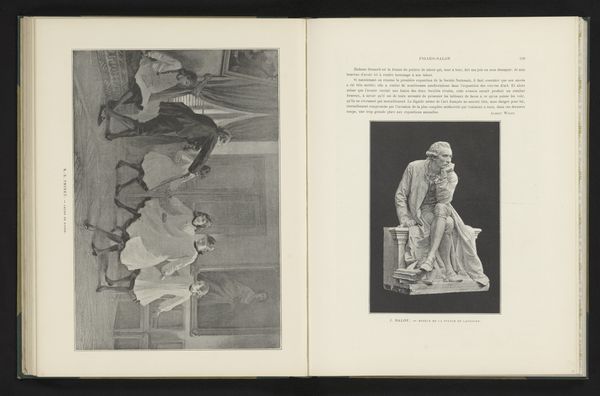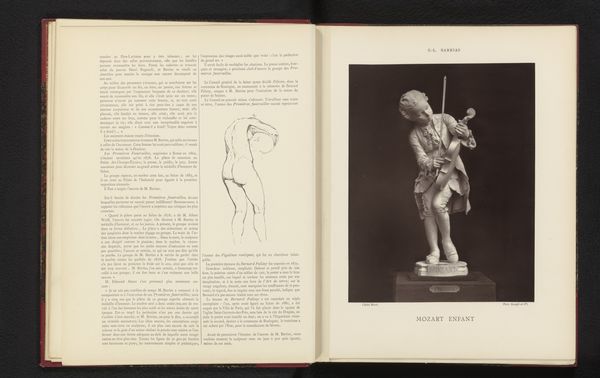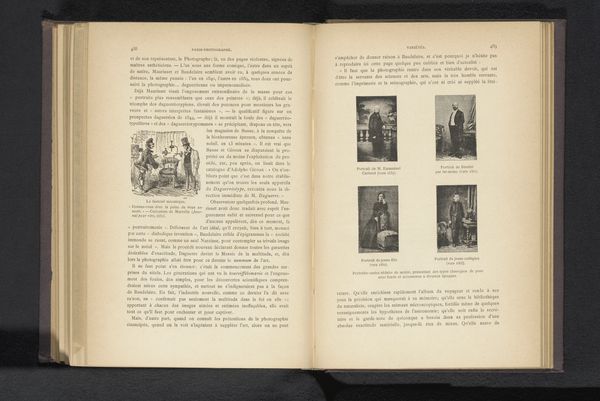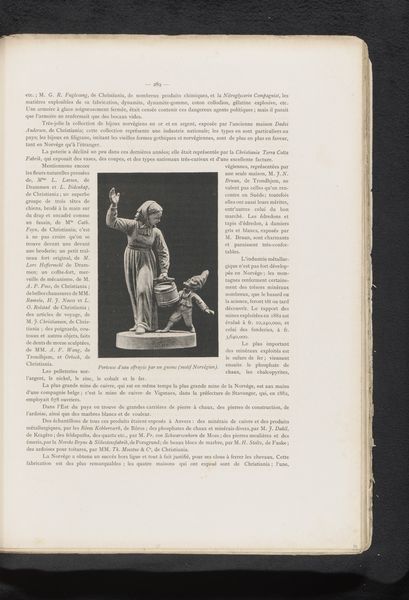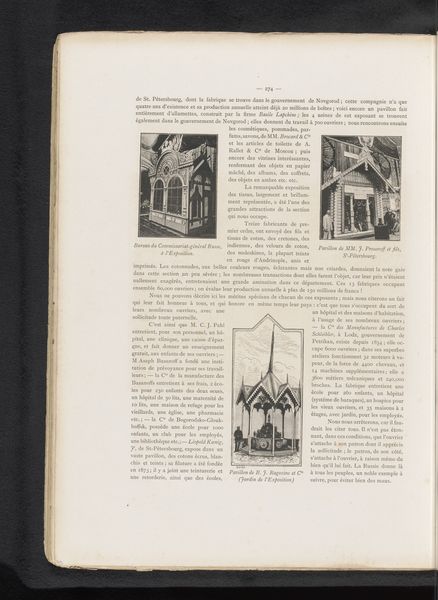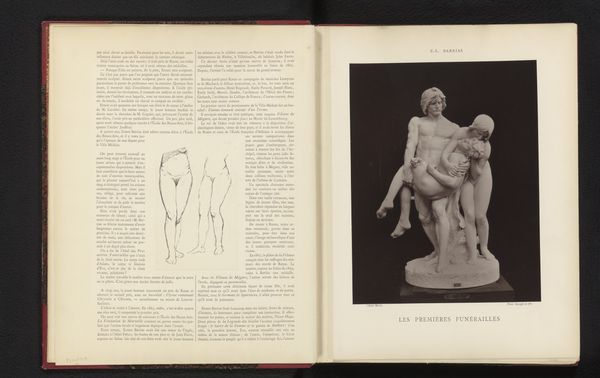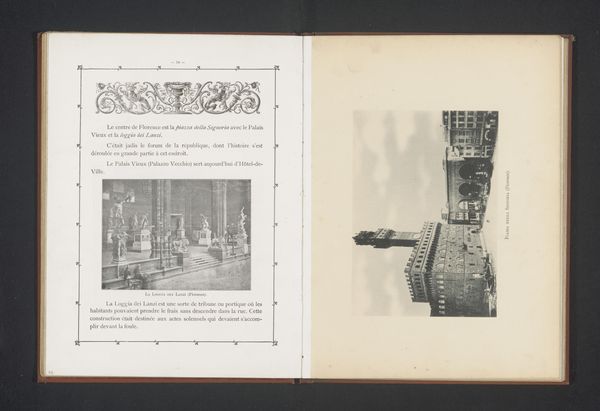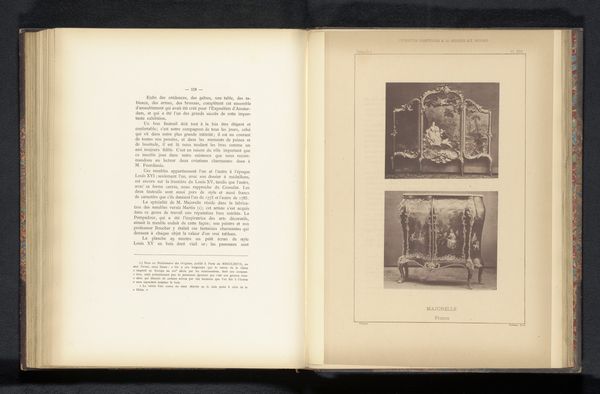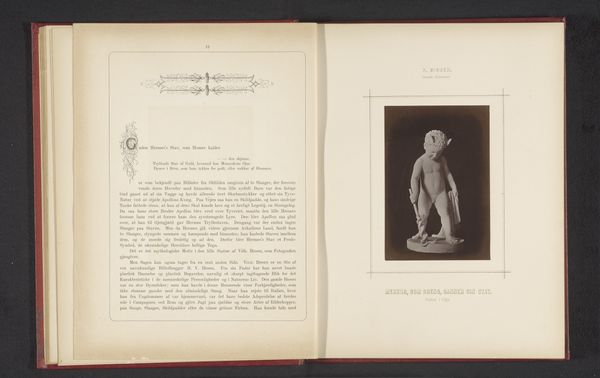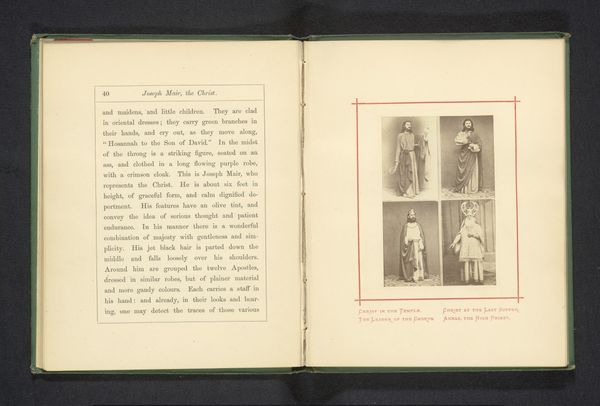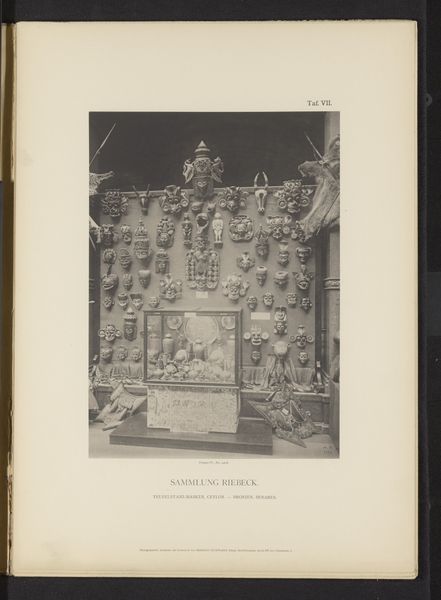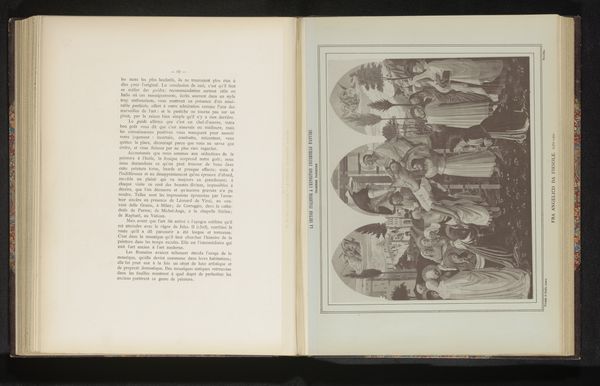
Bronzen groep van Marcus Antonius met leeuwen in de tuin van het Grand Palais tijdens de Wereldtentoonstelling te Parijs in 1900 before 1901
0:00
0:00
Dimensions: height 282 mm, width 206 mm
Copyright: Rijks Museum: Open Domain
This photograph by Lévy Fils et Cie captures a bronze sculpture of Marcus Antonius with lions, displayed at the Grand Palais during the 1900 Paris Exposition. The image presents Antonius as a figure of power, seated and accompanied by lions, symbols traditionally associated with strength and dominion. The lion motif stretches back through time. From ancient Mesopotamia, where they guarded temples, to their presence in Egyptian, Greek, and Roman art, lions denote royalty and divine protection. Consider the Lion Gate at Mycenae or the lions flanking thrones in Near Eastern art. The image of the lion has been consistently utilized to project authority. It is fascinating how these symbols resonate across centuries. This sculpture, showcased at a world exposition, consciously evokes these ancient associations. The choice of this symbol reveals a deep-seated human need to connect with archetypal images of power. The emotional weight of these symbols cannot be denied. The continuous return to, and reinterpretation of, the lion motif in art underscores the persistence of cultural memory and the symbolic charge it carries.
Comments
No comments
Be the first to comment and join the conversation on the ultimate creative platform.

